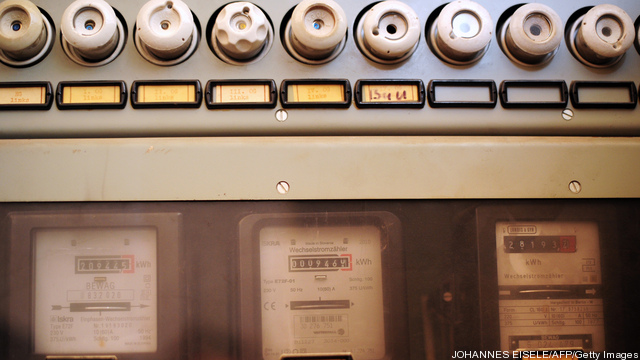
Last month, both Google and Microsoft announced the retirement of their home energy management applications.
The loss of Google’s PowerMeter and Microsoft’s Hohm has led to commentary about the difficulty of engaging energy consumers, and specifically about the fact that simply presenting energy use data seems to have little effect on consumer behavior. Google in particular has been faulted for devoting too much real estate in PowerMeter to displaying customers’ energy use throughout the day.
I agree that data presentment alone does little to motivate energy savings. However, I believe the real mistake Google made was in misunderstanding the value consumers see in curbing energy use. And in this failure, Google is no worse than the rest of the industry.
While commentators have focused on the limits of PowerMeter’s interval data presentment, the application also included a number of features that home energy management vendors are touting to utilities. PowerMeter incorporated an analysis and recommendation engine, dubbed “the Wizard,” that provided consumers with personalized suggestions for saving energy, and introduced an element of peer pressure by allowing consumers to compare their usage to similar households.
I suspect that the combination of recommendations, feedback and social context is what helped the application achieve double-digit opt-in rates in certain territories. It is also impressive that Google managed to secure about a dozen pilot utility partners in the approximately two-year lifespan of PowerMeter.
So, if Google recognized the value of these advanced features, why did it devote so much real estate to data presentment? Largely for the same reason that all home energy management vendors do (including our product team at Efficiency 2.0)–because we have to, in order to work with utilities and access their energy data.
As a condition for supporting the investment required to install smart meters in homes, regulators often mandate that data flowing from the meters be provided to consumers. This ensures that utilities don’t implement smart grids for purely operational benefits, while passing on the full cost to customers.
Obviously, engaging and educating consumers is critical for a successful smart grid rollout. However, smart meter data is much more valuable as an input into an analytical engine than it is displayed to the consumer as a series of lines on a graph. The focus on discrete features mandated by regulators has incentivized vendors to build systems that please regulators and utilities, rather than develop the kinds of experiences that consumers want.
A value-based approach, as opposed to a feature-based approach, is the core of what we do at Efficiency 2.0.
At Efficiency 2.0, we’re attempting – with a good degree of success – to convince the industry to break out of this paradigm. Not only do we include personalized recommendations, feedback and social context, we have also developed a system to reward consumers based on their energy savings.
By curbing energy use, customers earn points redeemable for discounts at their favorite national and local stores. The rewards component is our single largest point of engagement with the customer; users spend about 40% of their total time in our program interacting with the rewards system, as opposed to 27% on data-driven features.
We chose to focus on rewards because our research reveals that–with the exception of early adopters, roughly 10-20% of a utility’s consumer base–few customers feel an incentive to reduce their energy use. For all but the lowest income segments, the energy savings achievable without significant cost and time investment is simply too small a part of customers’ annual disposable income.
Thus, energy management vendors need to find other ways to deliver value to consumers, and while we believe our rewards program offers the best-in-class approach in the market today, we are humble enough to know that there hasn’t been nearly enough exploration and innovation in the industry to be able to claim final victory or defeat.
The lesson we at Efficiency 2.0 draw from PowerMeter’s demise isn’t that interval data presentment is a dead end for consumers, but rather that targeted recommendations, personalized feedback and peer pressure have difficulty getting beyond the 10-20% early adopter cohort. If utilities fail to engage the remaining 80-90% of their consumer base, they will not be able to reach the aggressive efficiency and demand response goals that regulators have placed on them. They will also fail to increase customer satisfaction and education significantly enough to avoid backlashes in their smart grid rollouts.
The industry as a whole must embrace a culture of innovation that maintains laser focus on delivering value to consumers. A value-based approach, as opposed to a feature-based approach, is the core of what we do at Efficiency 2.0. We have already seen our rewards program extend well beyond the 10-20% early adopter cohort, but we also recognize that even our efforts have barely scratched the surface on what is possible in this space.
Photo Caption: Electricity meters
Thomas Scaramellino is the CEO of Efficiency 2.0, a Personal Energy Efficiency Rewards (PEER) program that uses consumer data to create personalized energy savings plans for customers and help them save money on their electricity bills.
